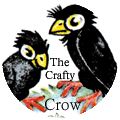 1.) Three hundred and twenty-eight different species of parrots live on the Earth.
1.) Three hundred and twenty-eight different species of parrots live on the Earth.2.) Parrots have a wide range of articulations. Wild parrots do not imitate. Only pets will mimic people and noises they hear. The African gray parrots are the best mimics.
3.) In the wild, Macaws and Cockatoos can fly 500 miles per day in search of food! Some parrot vocalizations can be heard for up to 1 mile!
4.) Larger parrots such as the macaws and cockatoos live more than 75 years.
5.) Smaller parrots live 10 to 15 years.
6.) Parrots weigh from just a few ounces to 3½ pounds.
7.) Parrots cannot eat chocolate because it is poisonous to their body.
8.) While eating, parrots hold their food in one of their feet, which can be either left or right, making parrots left as well as right handed.
9.) Parrots are zygodactyls i.e. they have four toes on each foot. Two of their toes point forward and two point backward.
10.) Parrots, when not nesting, live in groups known as flocks and are prone to squawking and screaming.
 1.) There are two types of camels: the Bactrian (or Asian) camel, which has two humps and the Dromedary (or Arabian) camel, has one hump.
1.) There are two types of camels: the Bactrian (or Asian) camel, which has two humps and the Dromedary (or Arabian) camel, has one hump.2.) It is illegal to hunt camels in the state of Arizona.
3.) Now, central Australia is home to the last remaining herds of wild camels in the world. Australia even exports camels back to the Middle East.
4.) The camel's nickname "Ships of the Desert" comes from their walk. Like a giraffe, the camel moves both legs on one side of its body at the same time, then the other side. The rolling motion resembles a ship at sea.
5.) Camels can be milked, but the flavour is an acquired taste. Dairy herds are kept in parts of the Middle East.
6.) Llamas are very closely related to camels. In fact a camel cross llama was bred in Dubai in 1997. It was called Rama the Cama.
7.) They can close their nostrils to keep sand out.
8.) A camel can run for several hours without stopping!
9.) A camels' stomach has three sections.
10.) The hump on a camel is mostly a lump of fat.
Up next for our animals are a Turrkey and the Otter. Check back soon for them.





































No comments:
Post a Comment